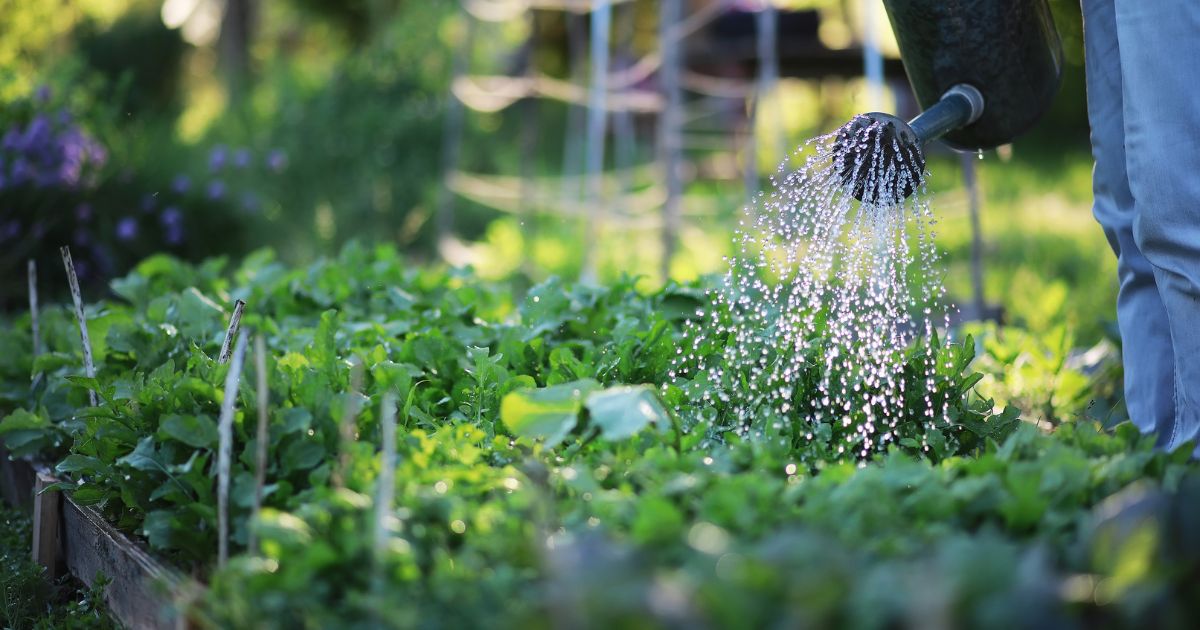Effective Watering Strategies for Northern Gardeners
Whether it’s hot like it is now or you just want to conserve a precious resource, understanding effective watering strategies is important for northern gardeners. Here are a few basic questions to consider when deciding when, how much and how to water.
How Much Water Do My Plants Need?
Depends on the plant. Mature trees and shrubs with deep or established root systems can go weeks without rain or supplemental watering. A seedling just emerging in your vegetable garden is much more fragile and will need to be kept moist much of the time. Among vegetables those needing water most frequently and most susceptible to heat stress are the greens and lettuces; plants like tomatoes, melons and green beans can handle a dry spell and heat a bit better. Onions need a lot of water; garlic less.
Annual flowers typically need supplemental watering in a hot or dry spell, and they let you know by wilting.
The general saying that plants need an inch of rain a week is approximate, and how much is an inch? An inch of rain is 27,154 gallons per acre, which if my high school math still works, is about 62 gallons on a 10-by-10 garden bed per week.
New plantings need more water than established ones. For instance, a new tree needs about a gallon and a half of water per day for the first few weeks it’s in the ground. Shrubs need a bit less. Perennials that were planted this year should be watered thoroughly two or three times per week.
How Do I Know a Plant Needs Water?
Some plants, like annuals, will tell you by wilting, flopping or curling their leaves. The best way to tell if a plant needs water is to check at the root level. Stick your finger into the ground near the base of the plant. If it’s cool and damp, it’s fine. If it’s dry, get out the hose.

How Much Water is Coming Out of My Hose?
This depends on water pressure, the diameter of your hose, how long your hose is and the nozzle you’re using. But there is an easy way to figure it out. Take a bucket or measuring vessel, add water from your hose while you count and see how much your hose delivers. In my case, the hose delivers about one cup of water per second. So if I count to 16, the hose has given a plant 1 gallon of water.
When is the Best Time to Water?
Experts are unanimous that the best time to water is early to mid-morning, especially during a hot spell. When you water early, the water has time to percolate into the root system rather than quickly evaporating. The second best time to water is in early evening when the temperatures are cooler and the sun is less intense.
Whether you water in the morning or the afternoon, aim the water flow at the base of the plant. Don’t water the leaves, even if they look like they are desperate for a drink. This year, I started to use a watering wand and it makes it a lot easier to direct the water at the roots compared to a standard nozzle.
Does It Matter Where the Plant is Growing?
Yes! Plants in containers will need more frequent watering, followed by those in raised beds and lastly those in the ground. Small containers and dark-colored containers will get hotter and have more evaporation than larger, lighter containers. Hanging baskets generally need watering twice a day in warm spells. Tip: if you are watering a lot, nutrients are running out of your containers. You may need to fertilize more often to ensure good growth.
More Tips for Effective Watering
- Use an olla. This terracotta vessel can be buried in the soil near a plant. Fill the vessel with water and it slowly seeps into the ground to give the water a consistent supply of moisture. Don’t have an olla? Dig a hole near your plant and bury a plastic plant pot near it. Fill the pot with water and allow it to slowly empty. Or, follow this tip using a 5-gallon pail for tomato plants.
- Take your time. Water slowly to give plants a chance to absorb the moisture. Water for 5 seconds on one plant, then go to another, then come back to the first. Watering is contemplative work.
- Add mulch, especially organic. Plants with mulch around them will have less evaporation. An organic mulch, such as compost, can act like a sponge, holding water then slowly releasing it to the plant.
- Group pots together to reduce evaporation. Containers (especially terracotta ones) have a lot of evaporation. If you place them close together, it will create a damper microclimate.
- Add drip irrigation. This is a bit more of an investment in time and money, but drip irrigation directs water exactly at the roots, exactly when and how much you want. You can install the irrigation and then add mulch on top for extra insulation.
- Create a basin around precious plants. This video on planting trees shows how to use mulch as a berm around a newly planted treed. You can do the same thing around precious plants-whether it’s a favorite tomato or a new perennial. Pile up earth or mulch to create a moat around the plant. Water will stay in the moat and gradually water the plant.
- Add shade cloth in hot weather. Not exactly a watering strategy, but in warm weather some plants benefit from shade. A thin shade cloth will reduce the temperature and the stress on the plant and you won’t need to water as much.


2 Comments
-
Pingback: August Garden Chore List - Minnesota State Horticultural Society
-
Pingback: What to Do About Scorched Plants - Minnesota State Horticultural Society
Back to Blog